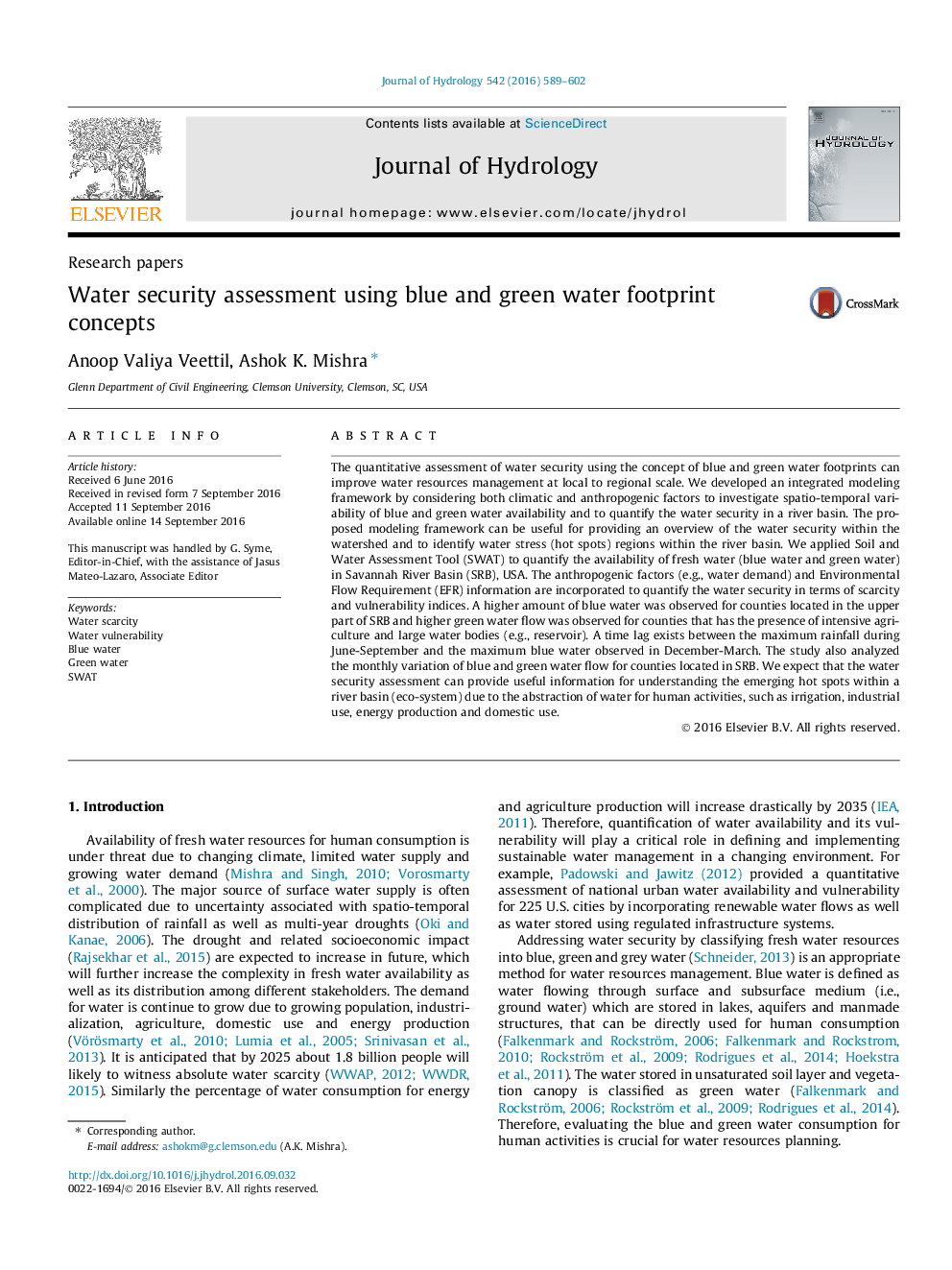| Article ID | Journal | Published Year | Pages | File Type |
|---|---|---|---|---|
| 6409289 | Journal of Hydrology | 2016 | 14 Pages |
â¢The spatio-temporal distribution of blue and green water is controlled by climates.â¢Green water flow is influenced by anthropogenic factors (e.g., intense agriculture).â¢A time lag exists between the maximum rainfalls and blue water availability.â¢Water security assessment can be improved using blue and green water concepts.
The quantitative assessment of water security using the concept of blue and green water footprints can improve water resources management at local to regional scale. We developed an integrated modeling framework by considering both climatic and anthropogenic factors to investigate spatio-temporal variability of blue and green water availability and to quantify the water security in a river basin. The proposed modeling framework can be useful for providing an overview of the water security within the watershed and to identify water stress (hot spots) regions within the river basin. We applied Soil and Water Assessment Tool (SWAT) to quantify the availability of fresh water (blue water and green water) in Savannah River Basin (SRB), USA. The anthropogenic factors (e.g., water demand) and Environmental Flow Requirement (EFR) information are incorporated to quantify the water security in terms of scarcity and vulnerability indices. A higher amount of blue water was observed for counties located in the upper part of SRB and higher green water flow was observed for counties that has the presence of intensive agriculture and large water bodies (e.g., reservoir). A time lag exists between the maximum rainfall during June-September and the maximum blue water observed in December-March. The study also analyzed the monthly variation of blue and green water flow for counties located in SRB. We expect that the water security assessment can provide useful information for understanding the emerging hot spots within a river basin (eco-system) due to the abstraction of water for human activities, such as irrigation, industrial use, energy production and domestic use.
